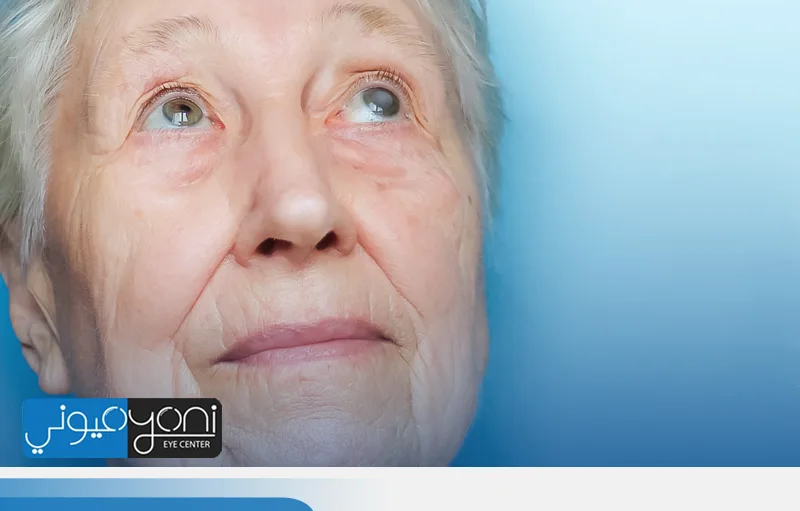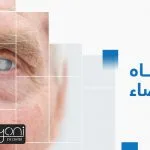Corneal opacity is one of the eye diseases that affect the cornea and cause blurred vision. The condition appears due to various causes, one of which is genetic factors. In this article, we answer the following questions: What is corneal opacity? What are its causes and treatment methods?
What is the cornea?
The cornea is the transparent part of the eye and the first outer layer of the eye. It consists of 5 layers:
- The epithelial layer
The outer layer of the cornea and the first line of defense against foreign bodies and bacteria.
- Bowman’s layer
The layer beneath the epithelium, a tough layer made of interconnected collagen fibers. Its function is to drain fluids away from the cornea.
3. The stromal layer (Stroma)
The thickest part of the cornea. Injury to this layer leads to difficult-to-treat scars.
- Descemet’s layer
The posterior membrane of the cornea. It is a very thin layer, and degeneration of this layer may require corneal transplantation.
5. The endothelial layer
The last layer of the cornea that maintains normal fluid movement in and out of the cornea. Some fluid naturally seeps from inside the eye into the cornea, and the endothelial layer pumps excess fluid out.
The cornea contains no blood vessels; it receives oxygen from the air and nutrients from tears and the aqueous humor inside the eye.
The cornea’s function is to focus light entering the eye, assisting the lens in directing it to the retina to form clear vision. Any opacity in the cornea affects visual clarity.
What is corneal opacity?
Corneal opacity is the clouding of the cornea (loss of corneal transparency). In other words, it is the formation of scar-like tissue within the cornea that obstructs vision. Its severity depends on the depth and location of the opacity.
Causes of corneal opacity
The causes of corneal opacity include:
- A congenital defect present at birth due to genetic factors or maternal illness during pregnancy. Early diagnosis is essential for successful treatment and clear vision later in life. Delayed diagnosis increases the risk of amblyopia (lazy eye), which becomes difficult to treat at older ages.
- Repeated superficial injuries due to eye trauma or misuse of contact lenses. The treatment method depends on the depth of the injury.
- Trachoma, an endemic disease in the Middle East. Recurrent infections cause ulcers on the inner eyelid, increasing lid roughness and causing abnormal friction between the eyelashes and the cornea, leading to corneal scars that result in opacity.
- Bacterial and viral eye infections.
- Continuous exposure to chemicals, especially workers in battery manufacturing plants.

Symptoms of corneal opacity
The symptoms mainly include loss of corneal transparency and turning white. The opacity may form in the center or periphery of the cornea. The degree of cloudiness depends on the thickness and location of the opacity.
Diagnosis and treatment of corneal opacity
Accurate diagnosis is the first step in treating corneal opacity. The doctor examines the eye using a slit lamp to detect corneal clouding. Optical coherence tomography (OCT) is then performed to determine the depth of the opacity. Based on depth, location, and effect on the visual axis, the doctor chooses one of the following treatments:
- Removing superficial opacities using excimer laser
A specific type of laser called the excimer laser is used to remove superficial corneal opacities.
- Partial or full corneal transplant
The doctor replaces the damaged cornea with a donor cornea, either partially or completely depending on the affected layers. Corneal transplantation techniques include:
- Surgical corneal transplant
- Dilation of the pupil using eye-dilating drops.
- Local anesthesia.
- Using a surgical blade to make an incision in the cornea and remove the damaged tissue, then stitching the donor cornea in place using surgical sutures.
- Femtosecond-laser corneal transplant
- The doctor uses a femtosecond laser to cut the damaged cornea and the donor cornea with extreme precision.
- The new cornea is fixed in place using air bubbles.
Dr. Tarek Abdelsamie, Consultant of Ophthalmology and Eye Surgery, is one of the most skilled specialists in corneal surgery, cataract surgery, and laser vision correction.
He confirms that corneal transplantation has up to a 90% success rate in treating corneal opacity. The risk of graft rejection is low, with rejection rates not exceeding 10%.
You may also like:






